|
cover & contents page | Rise & Fall of Kerry & Co | The Man & The Photographer | The Collection | The Plates | Biography | Kerry page
The Plates (second set)
These plates are those used in David Millar's book. There listed under group titles.
The scanned copies have been upoaded onto two pages. This is the second set...
Set Two (below)
Rural Industry Plates 40–46 / Recreation Plates 47–50 / Wheat Farming Plates 51–53 / Sheep Farming Plates 54–65 / Cattle Farming Plates 66–72
Set One (click here):
Sydney Plates 1–23 / Landscapes Plates 24–29 / Aboriginals Plates 30–31 /The Selector Plates 32–39
____Rural Industry
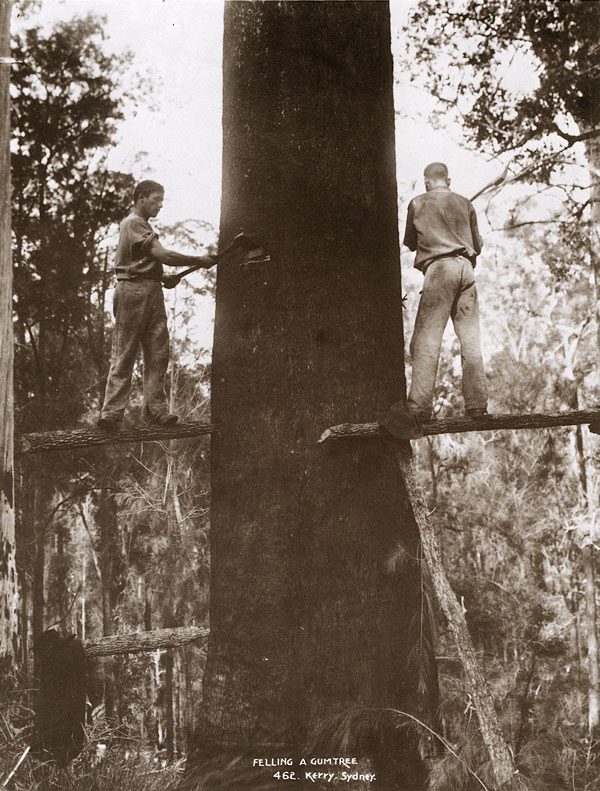 |
Plate 40: Felling A Gum Tree
The most respected of the itinerant workers was the tree-feller. He selected the timber, cut it down with an assistant, and then had the timber dragged to a pit where the pit saw was used to convert the timber into planks, the leading man, the 'top sawyer' or 'top notcher', stood on the top and guided the blade; the 'under dog' pushed the blade back to him.
|
| |
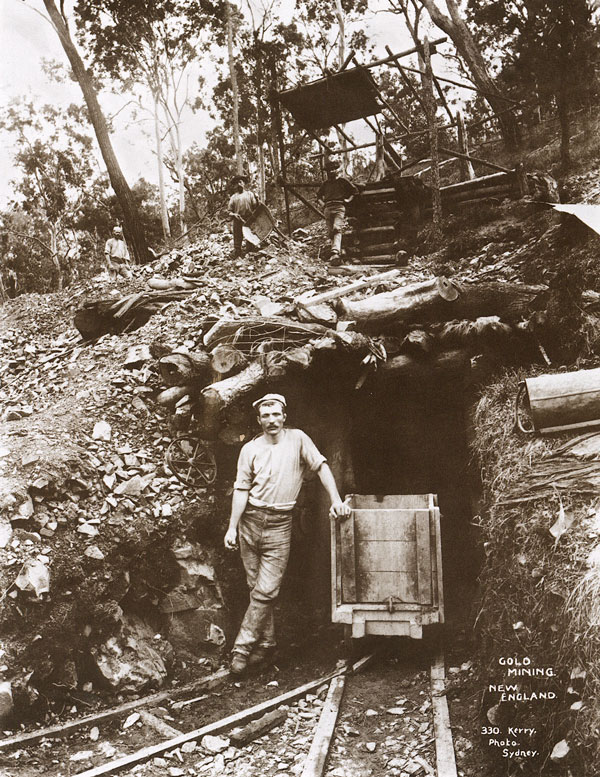 |
Plate 41: Gold Mining in New England
By the time this picture was taken, quartz mining of gold in New England was in decline. There had been discoveries of gold in 1887 at Ensmore and later at Bakers Creek, but by 1900 the peak of production had been reached and returns began to fall. This photograph was probably taken at Hillgrove, south-east of Armidale, where mining continued for quite some time
|
| |
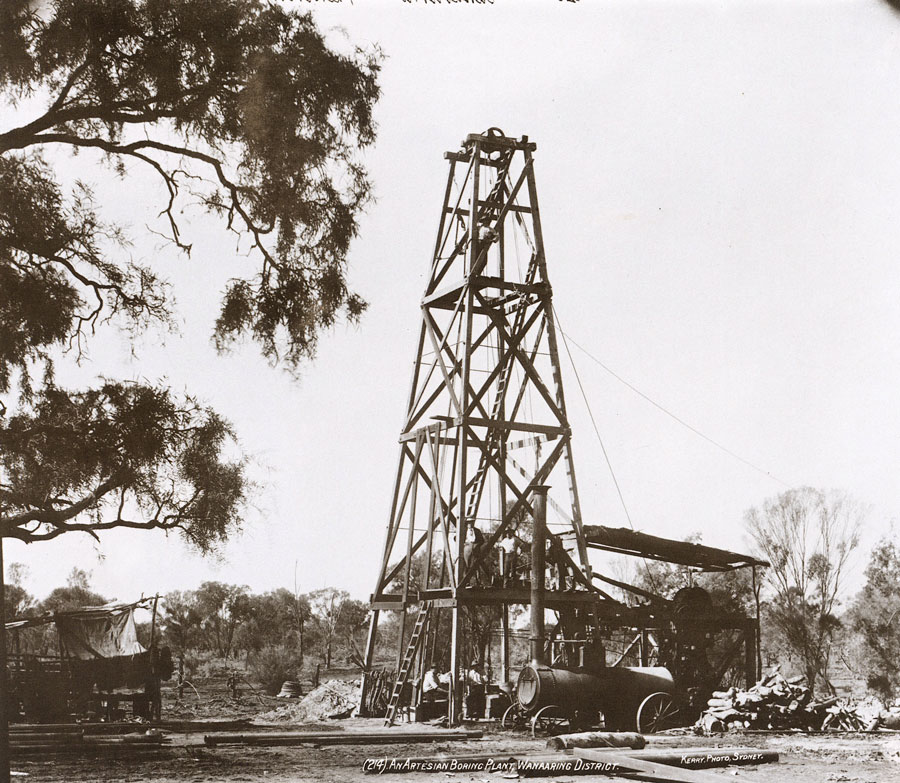 |
Plate 42 An Artesian Boring Plant, Wanaaring District
This photograph shows Pickering's Bore at Cullaburra. |
| |
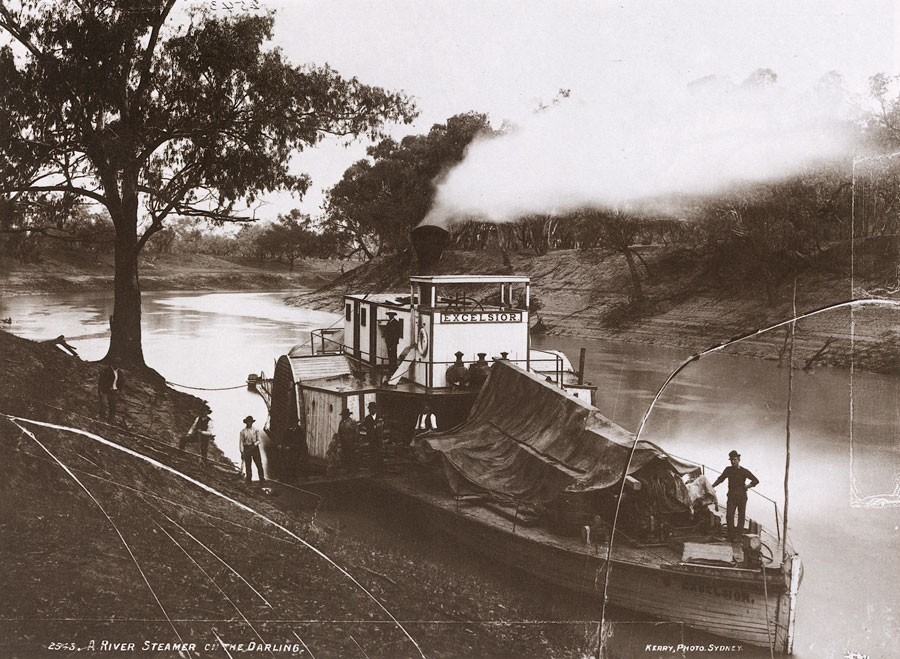 |
Plate 43: A River Steamer on the Darling River
Before the railway, these steamers were vital links in internal trade and transport. The Excelsior shown here was built at Goolwa in 1873 and joined the Gem Navigation Company. In the 1950s she ended up as a houseboat. The crew can be seen loading timber for fuel on to her forcdeck. |
| |
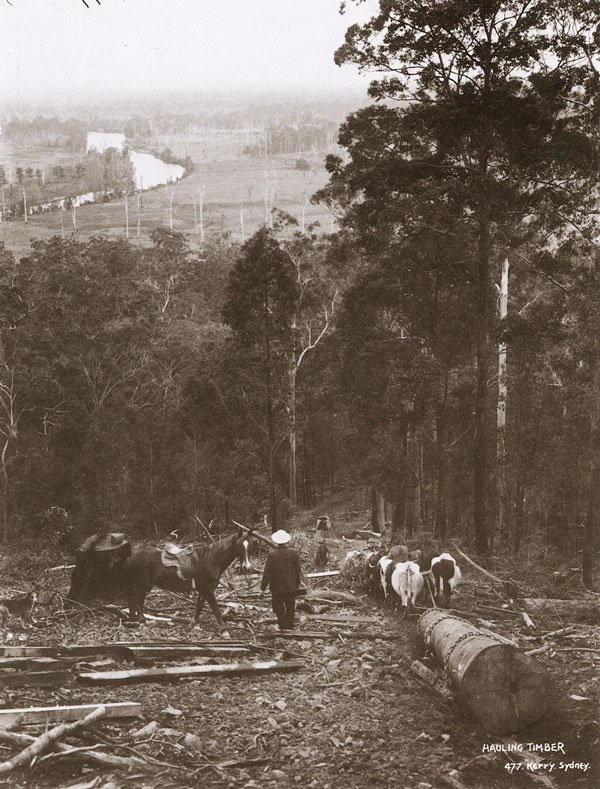 |
Plate 44: Hauling Timber
Bullock drivers were traditionally known as 'colourful characters' whose mam weapons were a proverbial mouth of invective and a four-metre plaited whip on a handle of 2.5 metres, tipped with a silk 'cracker'.
Where roads were poor or non-existent, the bullock cart or team reigned supreme, plodding between eight and sixteen kilometres a day.
|
| |
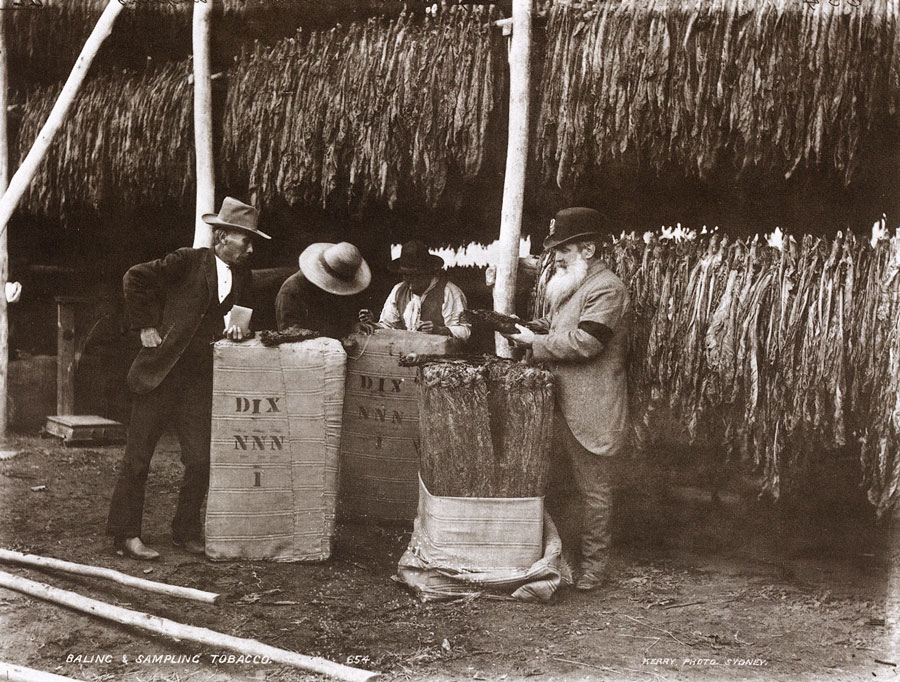 |
Plate 45: Baling and Sampling Tobacco
Chinese labourers are here working on baling tobacco in the Maitland area. By 1878 almost all the Chinese had given up the search for gold, or had been excluded from any new fields. Desperate for work, the Chinese were used as strike breakers or cheap labour from the 1870s. This increased hostility towards them resulted in the White Australia policy |
| |
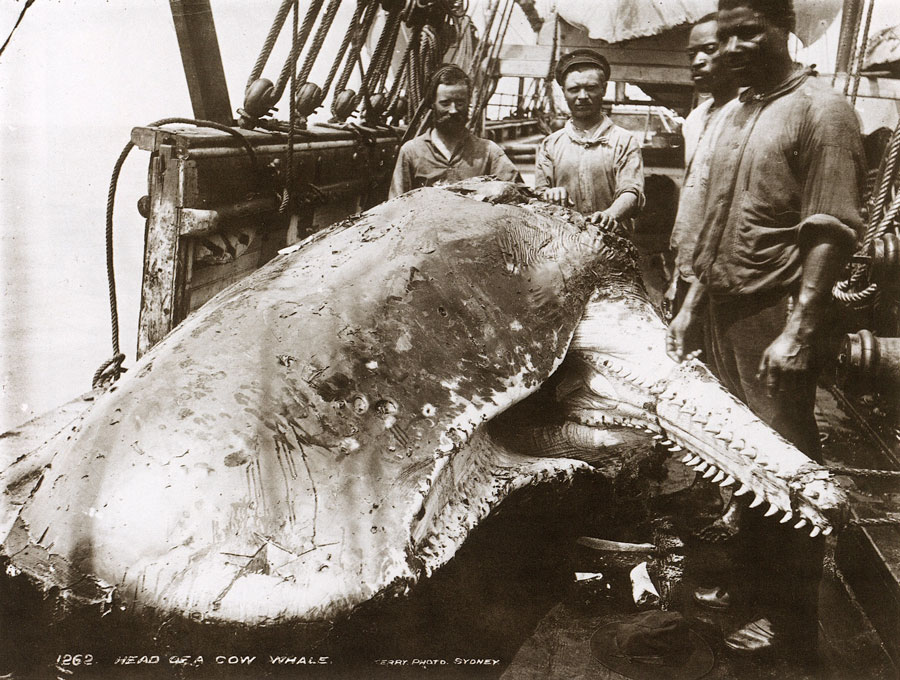 |
Plate 46: Head of a Cow Whale
This is one of a series of spectacular photographs of life on a whaler, hunting near Norfolk Island |
____Recreation
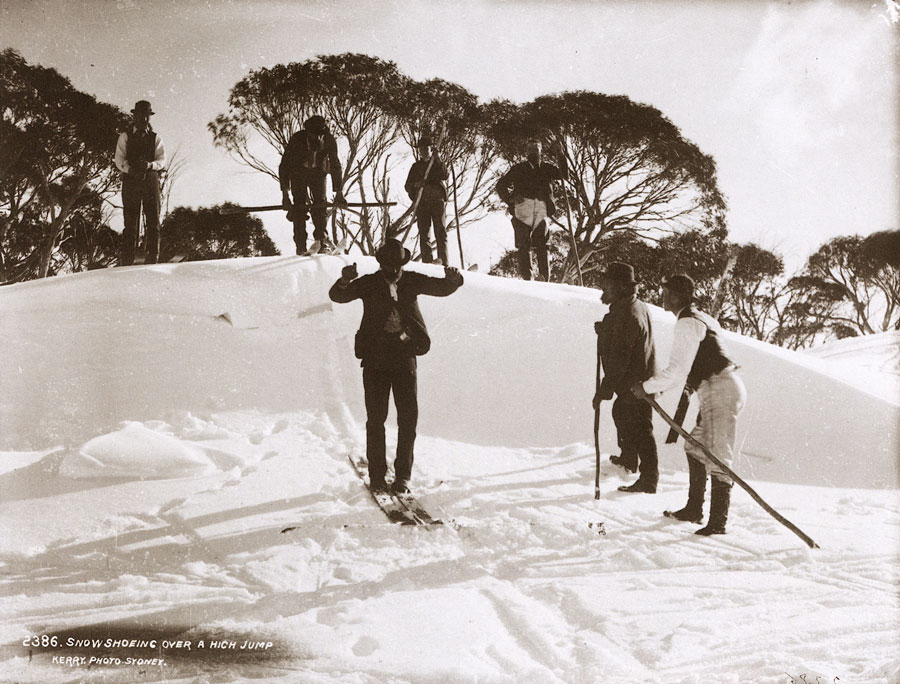 |
Plate 47: Snow Skiing over a High Jump
Skiing began at Kiandra in the 1860s with fence palings, known as 'butter pats', as skis. The Sydney Morning Herald of 6 August 1861 records how 'young people are frequently engaged climbing the lofty summits with snow shoes, and then sliding down with a velocity that would do credit to some of our railway trams'. |
| |
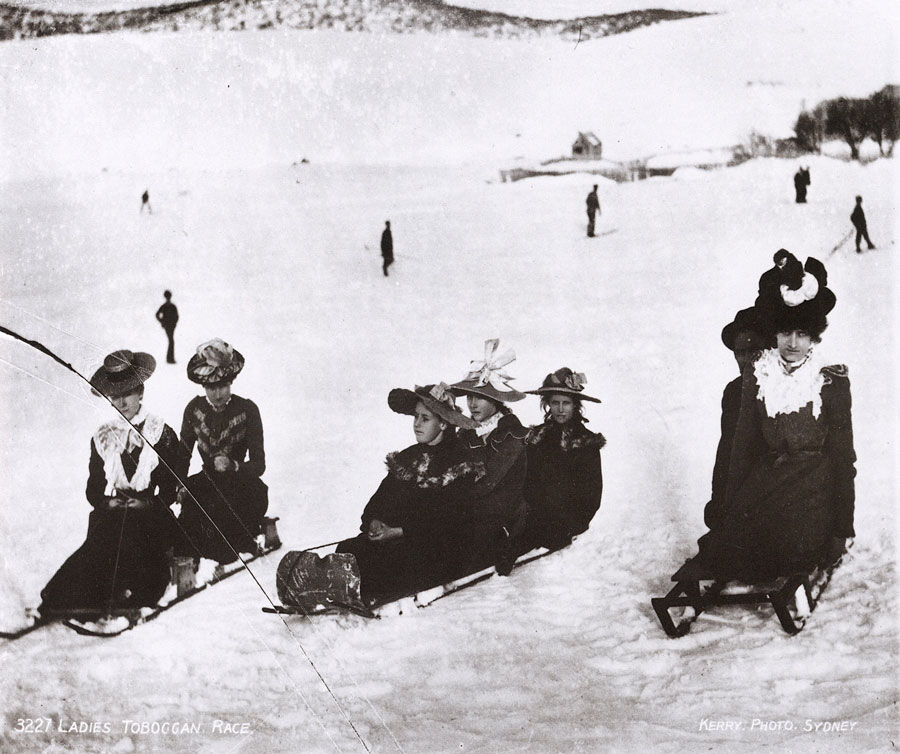 |
Plate 48: Ladies Toboggan Race
Taken near Kiandra, this 1900 photograph shows,
left to right, Agnes Eastwood, Ada Pattinson, Philomena Kilfoyle, unknown person, Mary Kilfoyle and Amy Pattinson. |
| |
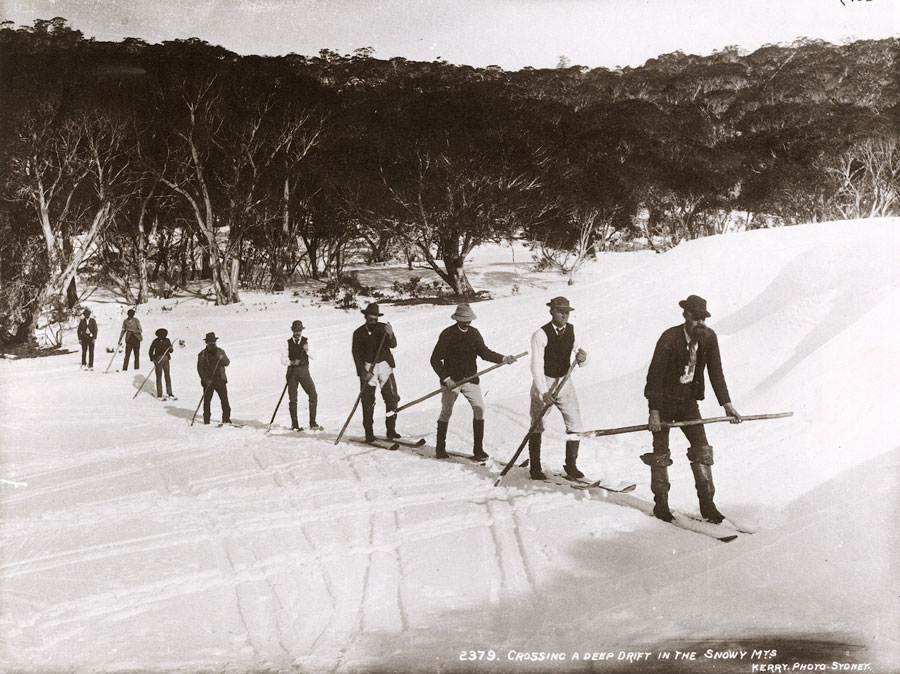 |
Plate 49: Crossing a steep rift in the Snowy Mountains |
| |
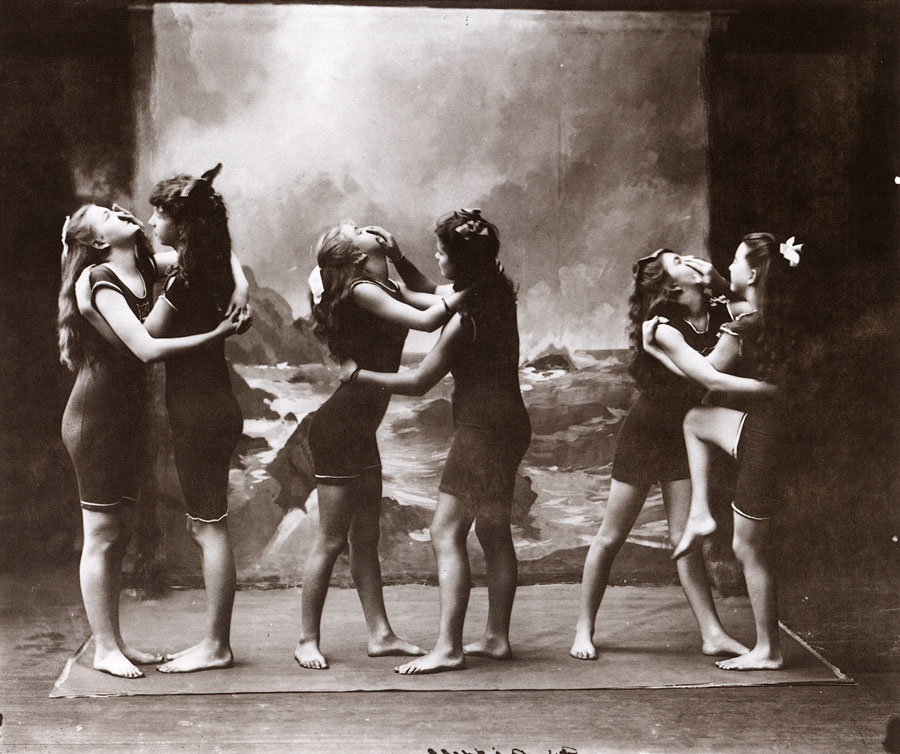 |
Plate 50: Mrs Biddell’s life saving class |
____Wheat Farming
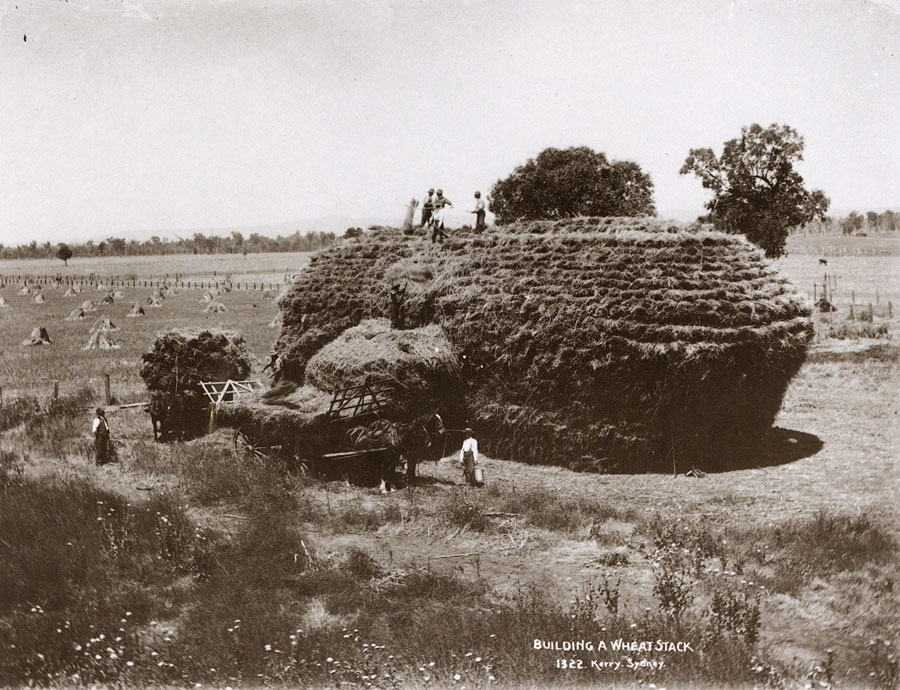 |
Plate 51: Building a Wheatstack
Before the McKay harvester was available, wheat was placed in stooks to dry,
and then built into stacks, pending the arrival of the contractor with his steam traction engine and harvest machinery. |
| |
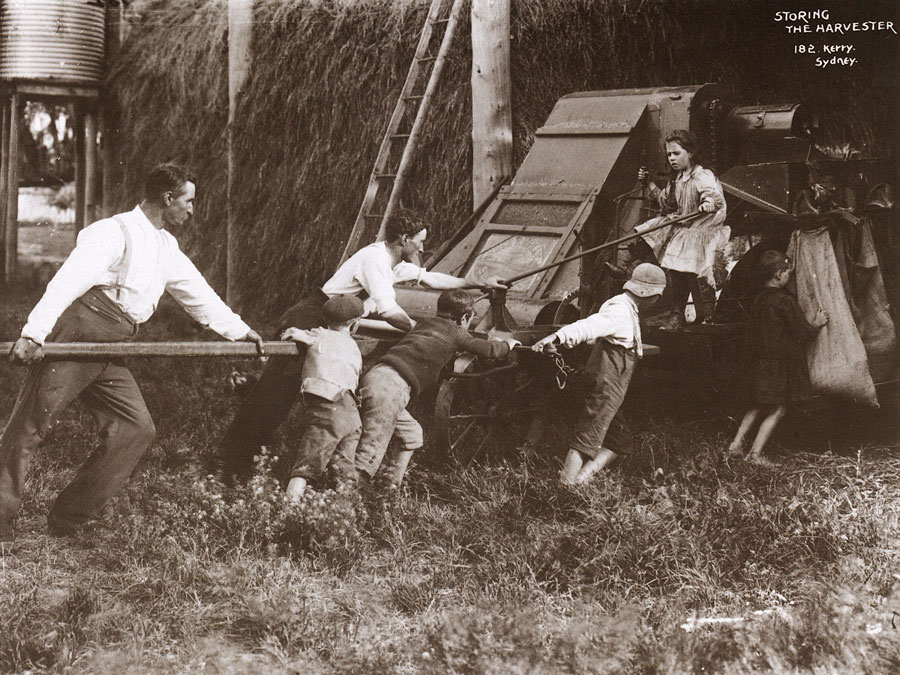 |
Plate 52: Storing the Harvester
Invented by an eighteen-year-old, Hugh Victor McKay, near Bendigo, Victoria, this harvester was the first in the world to strip, thrash, clean and bag the grain in one operation. It cut costs by nearly three-quarters and made wheat an economically feasible export. |
| |
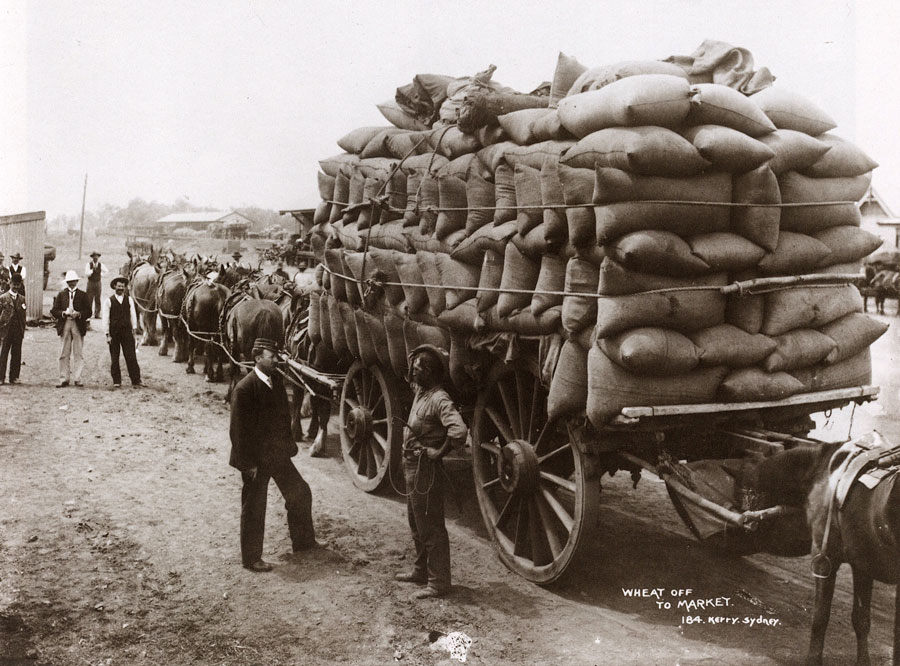 |
Plate 53: Wheat off to Market
Sending the wheat off to the railhead, shown in the background of this photograph, was an annual scene until the 1930s, when silos and motortrucks replaced the method shown here. The horse teams worked hard to avoid making more trips than was necessary. 'We'd load the wagon with wheat bags and hitch six horses, and then more. Then, sure enough, the chains would break,' reminisced one Mallee farmer. |
| |
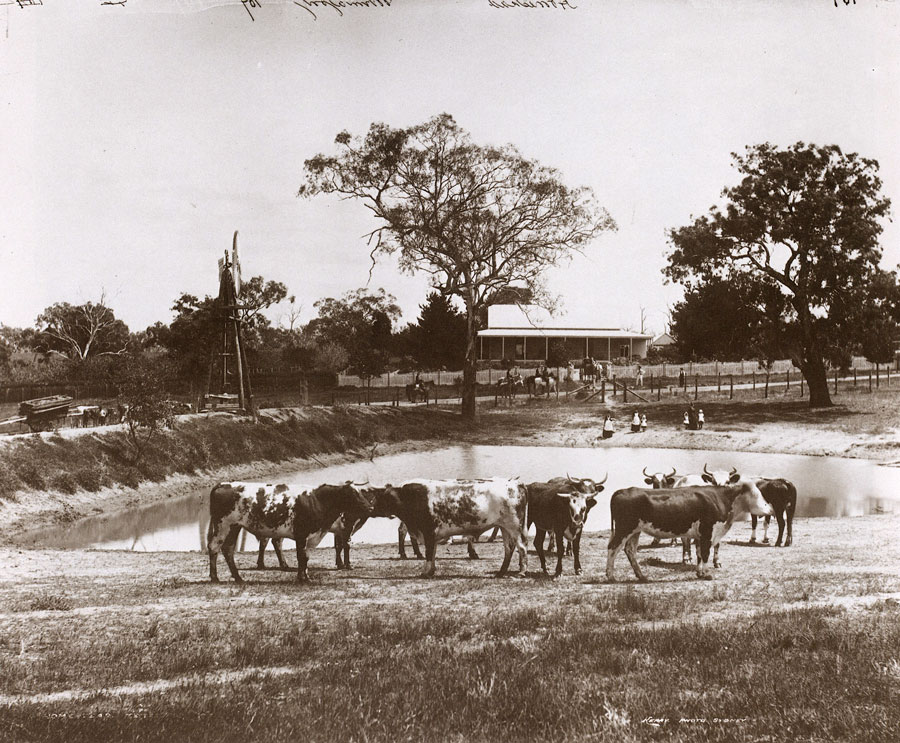 |
Plate 54: Homestaed, Memagong Station
An established sheep station in New South Wales, within the Young pastoral district, north-west of Canberra, Memagong Station was owned by the Young brothers, who ran 27,000 sheep and 260 cattle. Enlargement of homestead and family below... |
 |
____Sheep Farming
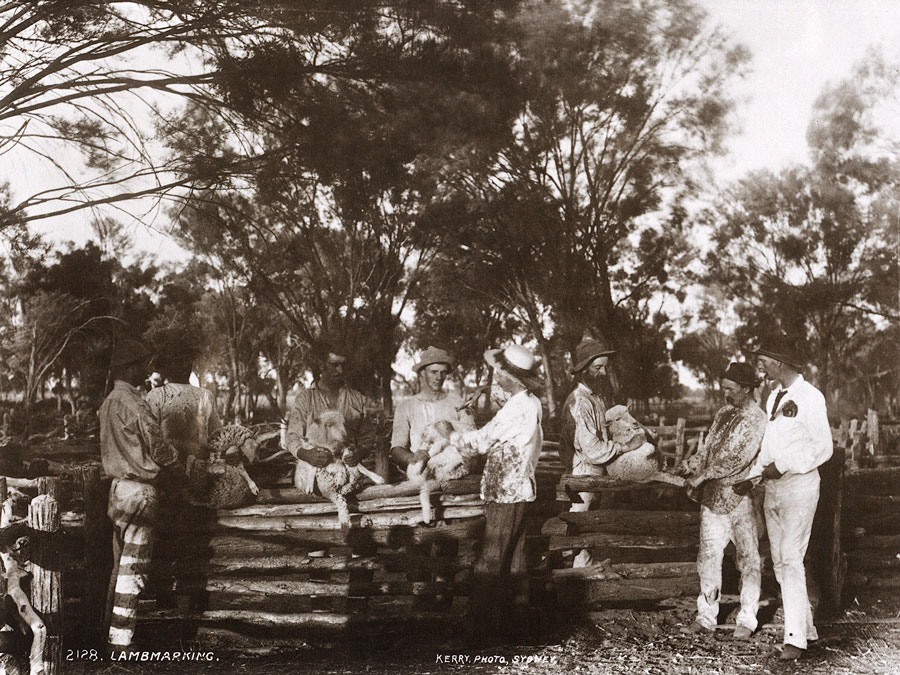 |
Plate 55 Lambmarking
This inadequate title was probably abbreviated for prudish Victorian reasons. The photograph shows the whole chain of indignities to which the male lambs are subjected: docking of tails to prevent their becoming dirty and attracting flies, castrating to produce wethers, and clipping the ears to denote sex and age. |
| |
 |
Plate 56: Shearing by Machinery
Mechanical shearing began in the 1880s at Euroka Station, near Walgett.
It enabled a closer cut to be made, and was easier on the shearers, who could now manage twenty more sheep a day. |
| |
 |
Plate 57: Shearing Board, Burrawang
Burrawang Station, in the Forbes Pastoral District, had an enormous sheep population: 116,190 in 1905.
The shed shows the shearing machines newly installed by the owners, Edols & Co. Ltd. |
| |
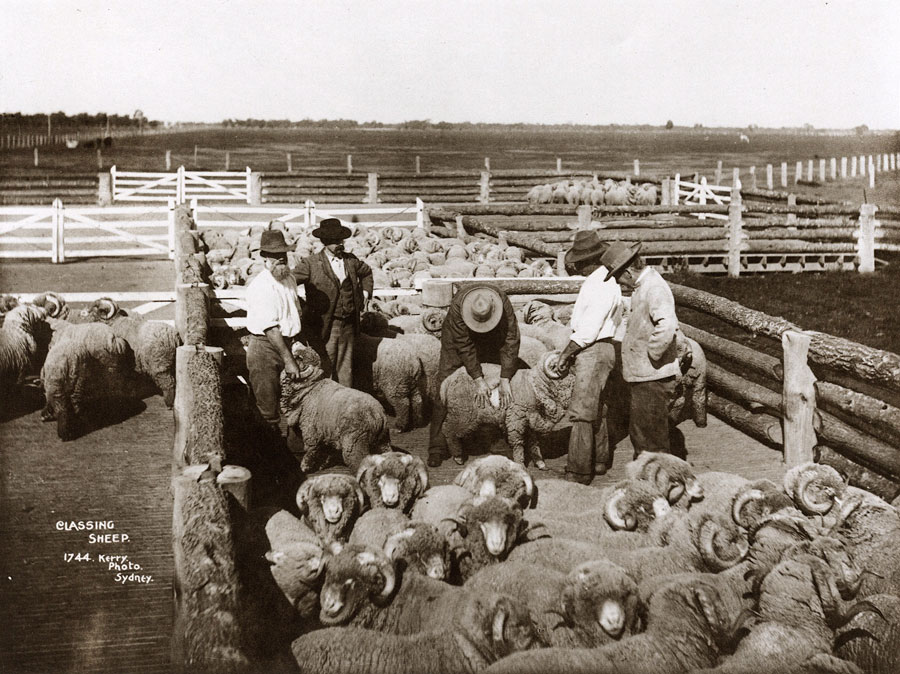 |
| Plate 58: Classing Sheep |
| |
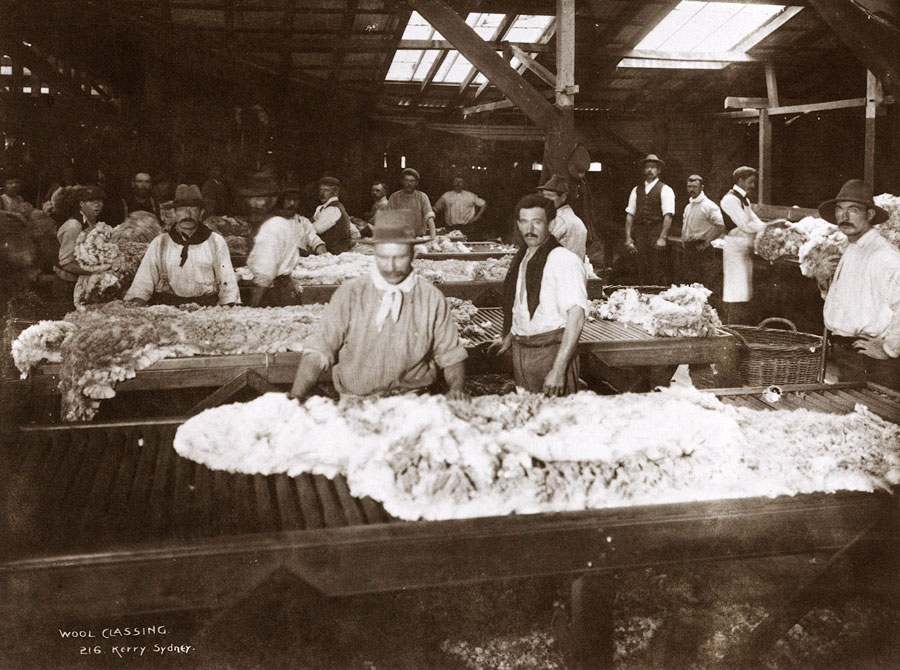 |
Plate 59: Wool Classing
The classers were the aristocrats of the woolshed. They sorted the wool into its various grades. Long, fine and even wool was the best, shorter length was medium grade, while fleeces whose fibres broke under the classer's fingers were relegated to the 'cast bin'. |
| |
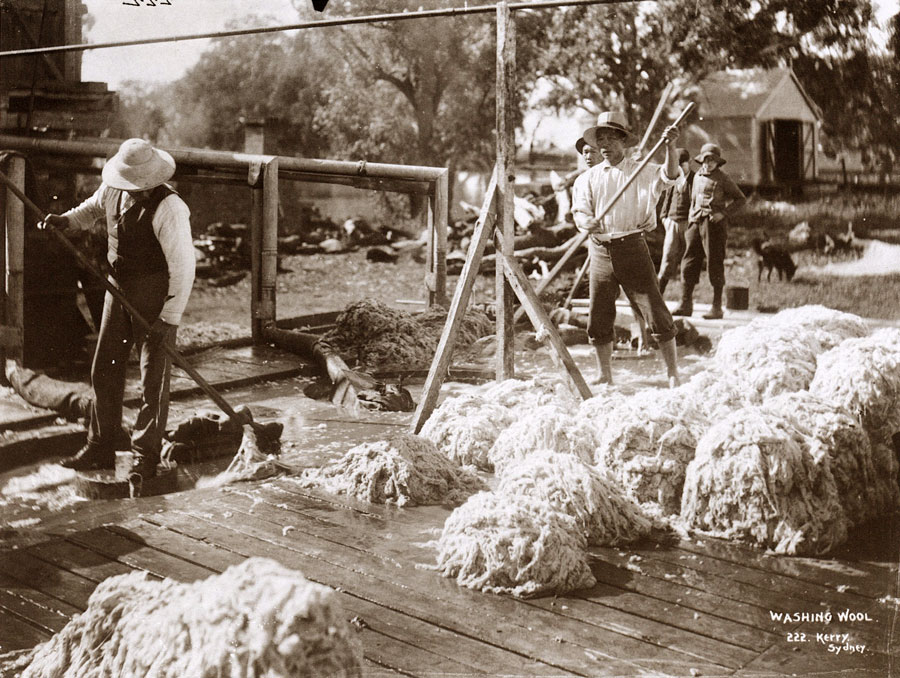 |
Plate 60: Washing Wool
A group of Chinese are scouring wool. The earliest method was to run the sheep through a race and scrub them as they went by. The introduction of steam meant that the water was now heated and a better job was obtained. The lanoline that resulted was sold as a byproduct. |
| |
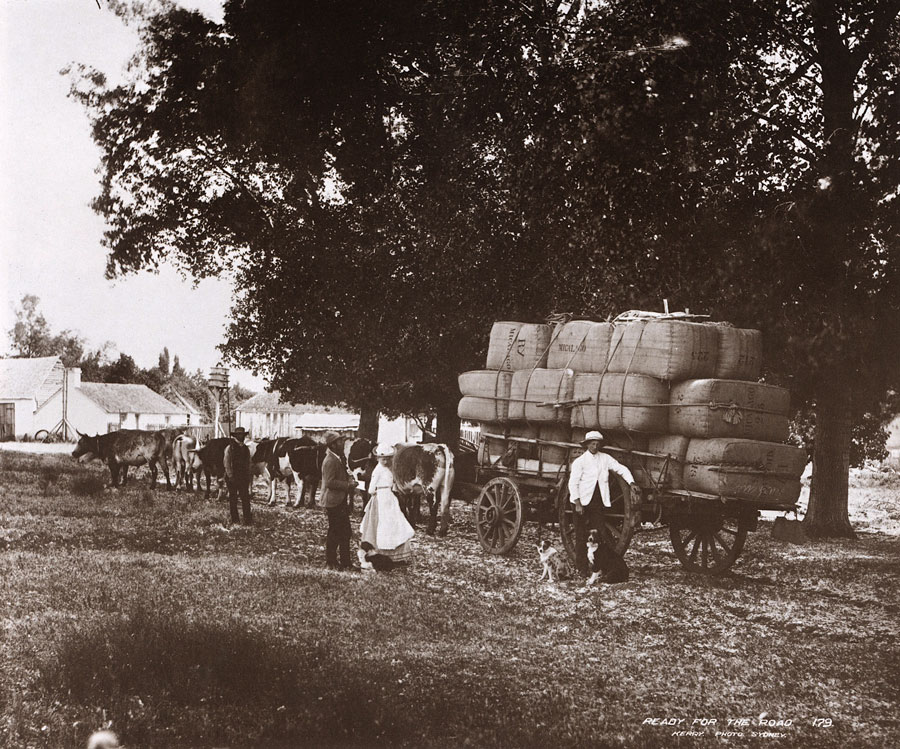 |
Plate 61: Ready for the Road
The wool clip leaves the property of A. Ryrie, Micalago Station, Cooma Pastoral District. This picture shows part of the clip from the backs of the 27,000 sheep that ran on the 2,000 hectare station. From the left are 'Old Jack' the bullocky, A. Ryrie, Evelyn, his sister, and Stanley, his brother. |
| |
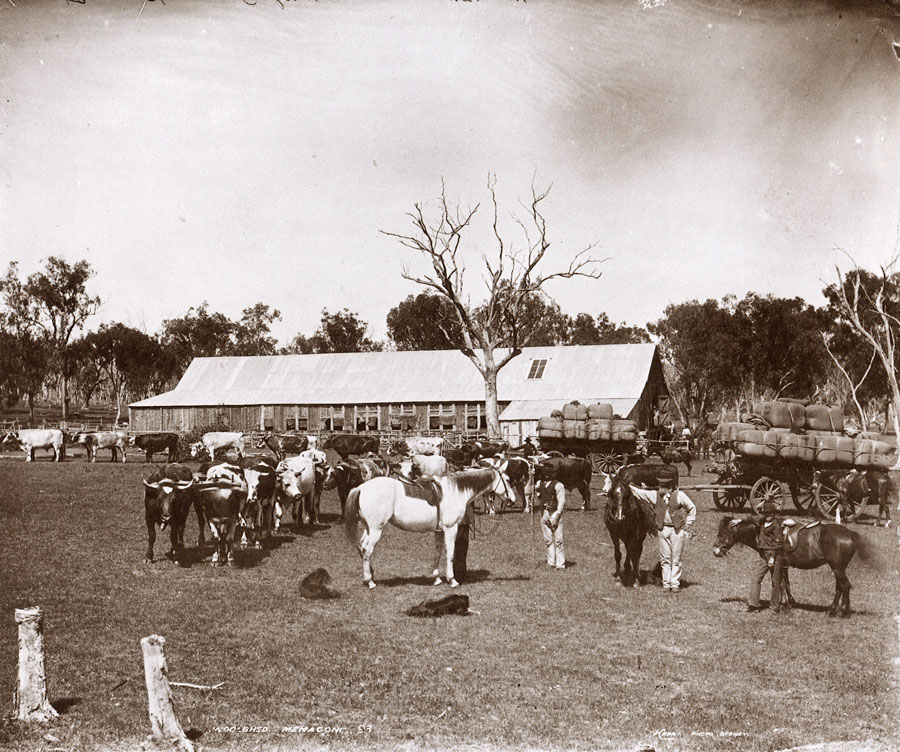 |
| Plate 62: Woolshed, Memagong |
| |
 |
Plate 63 Nombi Station:
Out in the west of New South Wales, in the Coonabarabran Pastoral District, near Mullalcy, lies Nombi Station on the Liverpool Plains.
Owned in 1905 by H. Moses & Sons, it ran 29,500 sheep when this photograph was taken |
| |
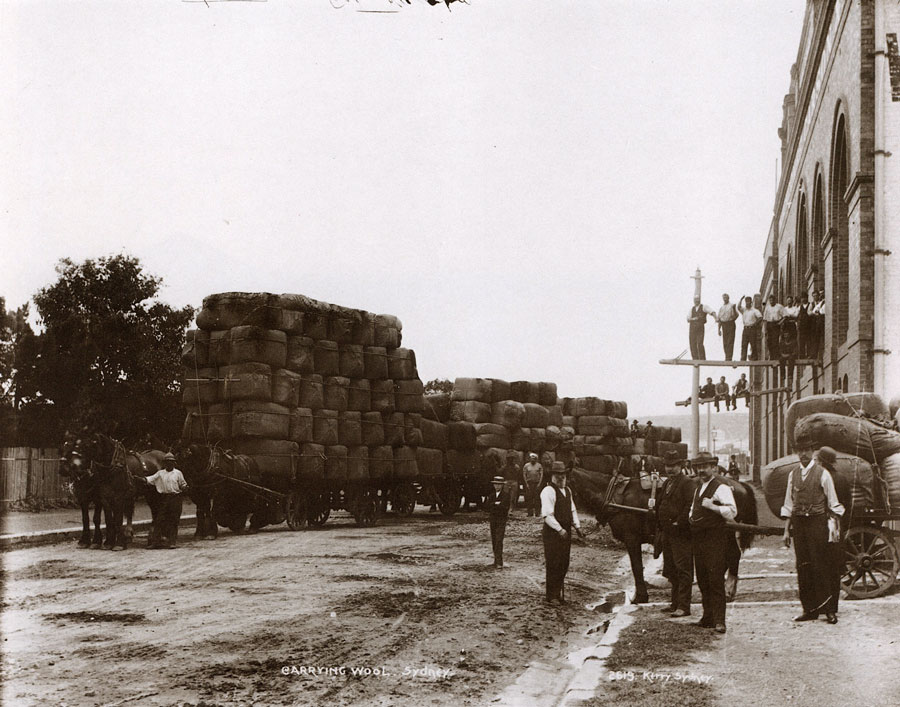 |
Plate 64: Carrying Wool, Sydney
This dramatic picture of wool wagons has been edited by Kerry. The bales provided spectacular accommodation for several men from the woolstore while they were being photographed. The border of the negative reads, 'Black out sky and all figures on the drays'.
See image below for details of the attempted editting out of a couple of the men. |
 |
| |
 |
Plate 65: To the Railhead
The clip was from the property of H. E. A. and V. W. White, 'Belltrees', Scone, Murrurundi District, New South Wales. This photograph shows the first of five crossings on the Hunter River. Each wagon, hauled by Durham bullocks, is carrying about fifty bales weighing about nine tonnes. The stencil marks on the bales show that the wool has come from Belltrees wethers. The head bullocky, Jack Dearmon, is shown standing on the bank, whip in hand. |
____Cattle Farming
Return to Set One of the plates or use the menu below to visit other sections of the book, or to return to the main Kerry page
>>cover & contents page | Rise & Fall of Kerry & Co | The Man & The Photographer | The Collection | The Plates | Biography | Kerry page
|